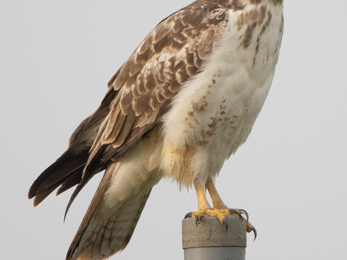There is something special about seeing a bird of prey, about being in the presence of an apex predator, a killer at top of the food chain, that makes me excited. They provide one of the few opportunities for us to witness a hunt in our local green spaces or gardens. I remember being enthralled as I watched a sparrowhawk plucking the feathers off a wood pigeon in my parents back garden where I grew up. Luckily, it’s one of those spectacles that is open to many of us, even if we live in the city. It can happen at any time – you may find yourself sitting in a motorway jam, watching a kestrel ride the winds, you could be walking in the Avon Gorge and catch a glimpse of a peregrine high above you, or you might look out of your kitchen window to see a sparrowhawk feasting on a kill in your own garden. However it happens, it’s always exciting.
In mid-June, Ed Drewitt , author , broadcaster and top birder, led one of Avon Wildlife Trust’s Lifelong Learning courses at Folly Farm, focusing on identifying birds of prey. We spent the morning learning to differentiate between our most common species. Some of the key things to consider when trying to identify a bird of prey is to look at the size, wing shape, tail shape, flight pattern and behaviour. Just knowing a few bits of information, I felt much more confident that I would be able to spot that pigeon-disguised sparrowhawk next time!
After an educational morning in the classroom, we went out to explore the wonderful reserve at Folly Farm. We climbed up to a hill with magnificent views stretching all out over the Chew Valley and over to the Mendips. With binoculars pressed to our faces we eagerly scanned around us, hoping to put our new birds of prey knowledge to the test. Before long we saw a few buzzards soaring over towards Chew Valley Lake. We even saw one hovering like a kestrel! There were also a couple of very distant kestrels and plenty of swifts screaming past us.


